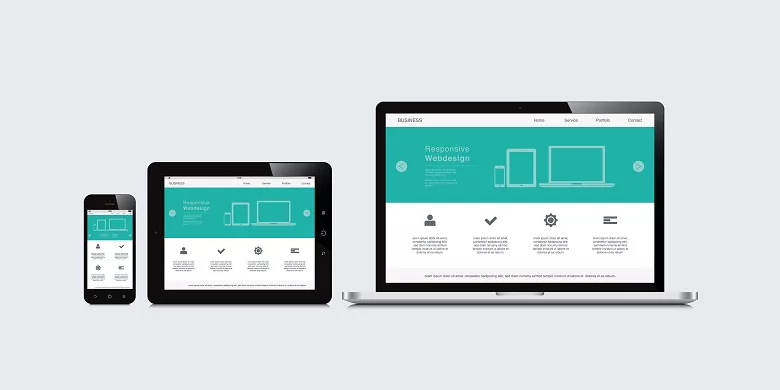Navigating the Digital Landscape: Some UI/UX Best Practices for Websites
October 23, 2023 11:56 am | by Sarvika Technologies | Posted in Post
A website for an enterprise serves as an ever-present salesperson, enhancing its visibility and ensuring that users can explore the business offerings, i.e., services or products, just as they would in a physical store.
With digitalization becoming a part of every economy, businesses are ready to establish a robust online presence by creating a website that goes beyond good looks and provides a stellar digital experience to its users.
Now, with more than 1,130,000,000 websites currently available online, competition to keep visitors engaged is at an all-time high. Therefore, one needs to give their best efforts in creating a website that delivers a seamless journey to the user.
It has become imperative for designers to craft and implement best practices that benefit the end-users and play a pivotal role in the organization’s overall success. To enhance the user experience and create a digital environment that users will keep coming back to, a plethora of practices come into play.
These practices, when harmoniously applied, deliver a user-friendly website that promises an exceptional online journey from start to end.
Here are some recommended practices in UI and UX design that contribute to enhancing the user experience:
1. Prioritize Simplicity
One of the foremost principles in UI and UX design is simplicity. Designers should concentrate on creating uncomplicated designs that facilitate easy navigation for users. Overcrowded and intricate layouts tend to be unclear to users, resulting in dissatisfaction and site abandonment.
Incorporating simplicity also aids users in achieving their objectives quickly and efficiently, as most users have limited time to spend on apps or websites. A streamlined and straightforward user interface (UI) with consistent font and color schemes, clean lines, and an effective visual hierarchy can make design execution appear effortless.
2. Emphasize Usability
Since websites and applications are designed for users, ensuring flawless usability is paramount. Designers must create easily understandable websites that deliver an exceptional experience from the very first moment, whether the user is a newcomer or a returning customer. To ensure usability, designers should have a comprehensive understanding of their target audience’s requirements.
3. Speed Is Crucial
Did you know?
– A desktop web page should load in 2.5 seconds, and a mobile web page should load in 8.6 seconds.
– When compared to a one-second loading speed, a page load time of 10 seconds on mobile increases the bounce rate by 123%.
– 53% of mobile site visitors leave if a page does not load within three seconds.
– Online retailers have reported that almost 70% of consumers are influenced by page speed when making a purchase.
Users have busy schedules and short attention spans, and they won’t hesitate to switch to another website if the user experience is subpar. In UI/UX design, website speed plays a pivotal role because slow loading times can lead to visitor frustration and negatively impact the site’s search engine ranking.
To address this, optimize image sizes and minimize the number of HTTP requests, especially when dealing with large media files or images.
4. Streamline Navigation
Achieving a seamless user experience can be facilitated through streamlined website navigation. This allows users to browse quickly and intuitively, creating their own paths to find the most relevant information.
Ensure that essential details are easily accessible from multiple points on the site, making navigation effortless.
A clear, intuitive navigation structure, adaptability to different devices, search functionality, visual cues and feedback, and constant testing and iteration can streamline the user journey and improve overall website performance.
Your navigation design should prioritize user experience so that visitors will return time and again.
5. Responsive Design
In our multi-screen world, your website must shine on every device. Responsive design makes it happen by automatically adapting to screen sizes, ensuring a seamless experience.
This keeps images in check and eliminates the hassle for mobile users. The goal: no more resizing, scrolling, or zooming. Neglecting this can cost you frustrated customers. Embrace both desktop and mobile users, as mobile usage is on the rise worldwide.
6. Testing and User Feedback
Testing is a vital aspect of UI/UX design. User feedback provides invaluable insights into the success or failure of your design. Methods like A/B testing, user interviews, and prototypes are valuable tools for evaluating whether a design meets established usability and ease-of-use requirements.
Designers should always remain receptive to user suggestions and constructive criticism, adjusting their designs accordingly.
Conclusion
Adhering to best UX and UI design practices is essential for crafting outstanding user experiences. Designers create intuitive, engaging interfaces that are aligned with business objectives when they give precedence to user needs, simplicity, usability, consistency, and staying current with industry trends. These principles elevate the overall user experience, leading to increased user satisfaction, loyalty, and business success.
Written by Sarvika Technologies
Sarvika Tech is a team of young, energetic, and technology-loving people on the journey to help companies achieve their goals by supporting their IT needs. In a nutshell, we are a people’s company where the priority is their knowledge enhancement and career development. We believe that focusing on our most important asset, the team, will enable us to push boundaries and deliver ingenious IT solutions.






